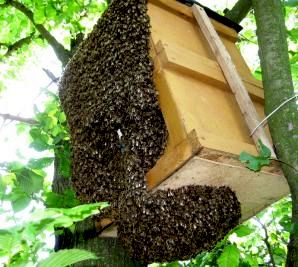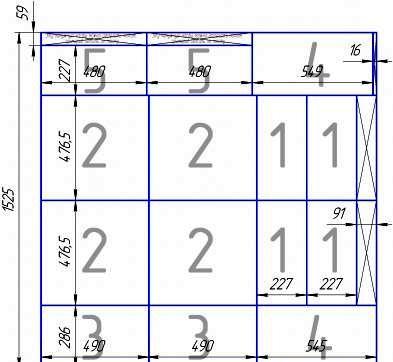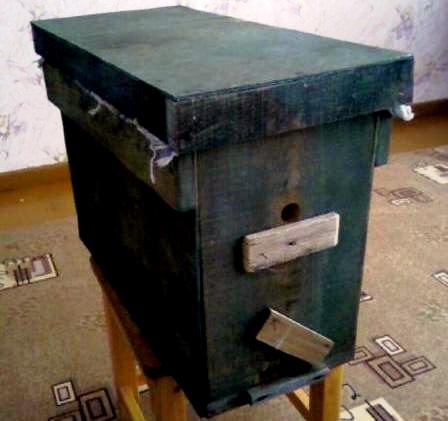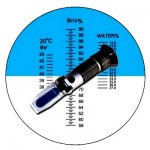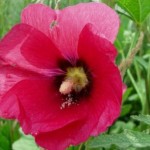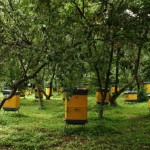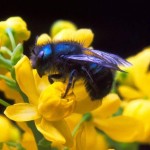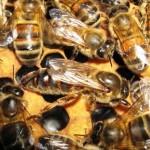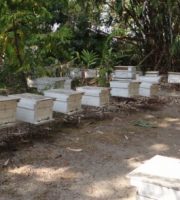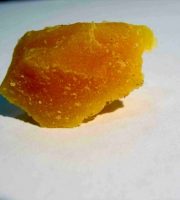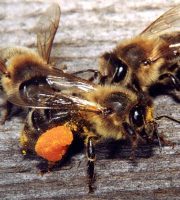If you want to start beekeeping, you first need to get the bees. This can be done in two ways. First, you can simply buy bees. Packages of bees can be purchased in any special bees shop or many other similar establishments. You can purchase them from the private owners, but in the spring few are willing to give away healthy overwintered family.
The second way is to catch flown away swarm with a bee trap. You can catch the swarms, which departed from the apiary or hibernated in the woods or in the mountains. Swarming bees often fly away from the apiary.
Traps for bees – is the solution for catching bees. Some people say that traps in the forest are better than traps in the open areas.
The main thing is to make a good trap.
The main characteristics of a good trap:
– light and small
– easy to use;
– safely adhered to the trunk;
– you can make it quickly and it does not require much money.
Drawing of the trap for bees
Here we present a simple drawing of trap for bees.
Any drawing can be started from the beginning – you need the material for this trap. How to make a trap for bees – here.
Sizes of traps for bees
The trap can be in the form of a box, round, etc.
The form of the trap does not matter. Trap in the form of a box is the most versatile. It is easier and cheaper to make.
How to make a trap for bees?
You can do frames from the rails 20 x 20 mm (1*1”). Sheathing can be made from plywood or two-fiberboard. You can do cover together with sides, and then you put it on the case, and secure with two pins, setting them on opposite sides of the trap.
To prevent loss, pins are tied to the cover. This scheme is time-tested. Carrying handle is usually attached at the top. Also, this handle may serve as a handle to hang the trap on the tree.
Depending on the size of the hive you can choose the size of a trap.
Internal dimensions of the trap for bees (swarms):
Depth – 470 mm (18.5”) (length of a standard frame)
Width:
5 frames – 190 mm (7.5”)
6 frames – 230 mm (9”)
7 frames – 265 mm (10.4”)
8 frames – 300 mm (11.8”)
9 frames – 340 mm (13.4”)
10 frames – 380 mm (15”).
The structure of the trap for bees
At the bottom of each trap you should cut notch, which is easily closed by the valve. The box must be varnished (preferably twice) to avoid the various processes that occur with wood.
Cells should be dark and empty but not dry. You do not need to put honey. Honey does not attract bees, but can attract other insects. In general, the trap should be a small hive, attracting bees.
Inside the trap you should put at least a few frames with the old honeycombs – it will attract bees and the beekeeper will facilitate the further process of moving the swarm. Also you can put inside or grate walls with citrus peel, mint or lemon balm. Some beekeepers spray traps and nearby bushes with sugar syrup to attract bees.
Setting the trap for bees
The best time to set traps – mid May – the end of June. Thick trees are more preferable. It is better to choose the edge of forests. Traps should be in the shade. When choosing a tree, choose the strong one. When you set it, you will need a rope with length of about 10 m. The trap is tied to a rope, and you climb a tree. Bind it to the branch at a height of 5-6 meters. Make space in front of a notch.
The best trap for bees
All of the prep work is done. It is enough to check the trap 1-2 times a week. In the evening after the sunset take the trap, trying to make it as late as possible.
Before placing a trap on the ground, close the lower notch. Next, gently bring the trap to the apiary and put in a dark, cool place. Open the notch. Move caught bees in the hive early morning. Prepare a hive in advance. It should have a couple of frames with honeycombs.

